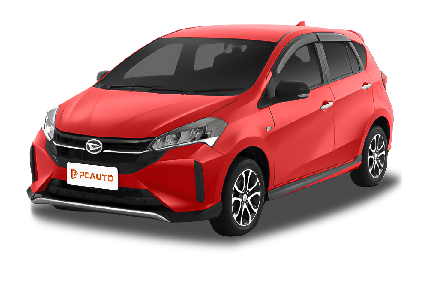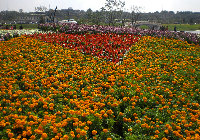Q
What is the fuel consumption of the Daihatsu Sirion?
As an economical and practical small car, the Daihatsu Sirion boasts quite good fuel economy. The specific fuel consumption varies according to different production years and engine configurations. Generally speaking, the urban fuel consumption of the 1.3-litre and 1.5-litre engine versions is around 6 to 7 litres per 100 kilometers, and it can drop to 5 to 6 litres per 100 kilometers when driving on the highway. The actual figures are also affected by driving habits, road conditions, and the vehicle's maintenance status.
For Malaysian consumers, this car is highly suitable for urban commuting. It not only has low fuel costs but also relatively affordable maintenance expenses, making it a great value-for-money option. Moreover, the compact body design of the Daihatsu Sirion makes it extremely maneuverable on Malaysia's narrow streets and in crowded parking lots. At the same time, its reliable quality and low fuel consumption meet the local consumers' requirements for economical vehicles.
If you're considering buying a fuel-efficient and practical small car, the Daihatsu Sirion deserves to be on your shortlist. It's recommended that you take a test drive before purchasing to better understand its actual driving experience and fuel consumption performance.
Special Disclaimer: This content is published by users and does not represent the views or position of PCauto.
Related Q&A
Q
How many litres is a Daihatsu Sirion?
As an economical and practical small car, the Daihatsu Sirion is well-received by many consumers in the Malaysian market for its fuel efficiency and flexible handling. The engine displacement of the Daihatsu Sirion varies according to different years and versions. For early models, such as the 1.3-liter version from 2004 to 2009, it is equipped with a 1.3L K3-VE engine (about 1.3 liters), while the 1.5-liter version uses a 1.5L 3SZ-VE engine (about 1.5 liters). Subsequent facelifts may also continue with similar configurations. Specifically, it is necessary to refer to the actual vehicle nameplate or the official manual.
For Malaysian users, this kind of small car is very suitable for urban commuting. It not only has high fuel efficiency but also relatively affordable maintenance costs. At the same time, as a technical partner of Perodua, Daihatsu has a well-established local after-sales service network and an abundant supply of parts.
If you are considering a used car or vehicle maintenance, it is recommended to regularly check the capacity of the engine oil and coolant and follow the maintenance cycle recommended by the manufacturer to ensure the long-term stable operation of the vehicle. Although engines with small displacements like these have moderate power, proper maintenance can significantly extend their service life.
Q
How long does a Daihatsu Sirion last?
As an economical and practical small car, the Daihatsu Sirion is favored by many car owners in the Malaysian market for its durability and low maintenance costs. Its service life mainly depends on daily maintenance and driving habits. Under the condition of regularly replacing consumables such as engine oil and filters and following the manufacturer's maintenance manual, it can usually travel over 150,000 to 200,000 kilometers. Some well-maintained vehicles can even exceed 250,000 kilometers.
The hot and rainy climate in Malaysia has a certain impact on rubber parts and electronic components. It is recommended to regularly check easily-aging parts such as belts and sealing strips, and pay attention to cleaning the cooling system to prevent overheating. The 1.3L and 1.5L engines equipped in this car have mature technologies, with sufficient supply of spare parts at affordable prices, which is very beneficial for long-term use.
It's worth noting that small cars have the advantage of flexible parking on Malaysian city roads. The fuel economy of the Sirion (about 15-18 km/L) is particularly practical for local users who often face oil price fluctuations. If you plan to buy a used Sirion, it is recommended to focus on checking the condition of the gearbox and the rust situation of the chassis, which are common concerns for high-mileage vehicles in tropical regions.
Q
What is the difference between Daihatsu Boon and Sirion?
The Daihatsu Boon and Sirion are two small cars with different positioning, and the main differences lie in their design and market positioning. The Boon is more inclined towards being an economical and practical vehicle. It has a compact body, which is suitable for city driving, and it offers excellent fuel consumption performance. The interior is simple and focuses on functionality, making it a good choice for consumers with limited budgets.
On the other hand, the Sirion is positioned slightly higher. It has a more stylish exterior design, uses more refined interior materials, and features a more flexible space layout. It is suitable for family users who pursue both comfort and practicality. Both cars are equipped with Daihatsu's reliable engine technology, but the Sirion usually comes with a more comprehensive range of configurations. For example, it may be equipped with more safety technologies or entertainment systems.
In the Malaysian market, both models have been popular for their affordable prices and low maintenance costs. However, the specific choice depends on individual needs. The Boon is suitable for daily commuting, while the Sirion is more suitable for users with higher quality requirements. Additionally, as a member of the Toyota Group, Daihatsu models have a good reputation for durability and after-sales support, which is also an important factor for Malaysian consumers to consider.
Q
What is the fuel economy of the Daihatsu Sirion?
As a practical and economical small car, the Daihatsu Sirion performs well in fuel economy. The specific fuel-consumption data will vary depending on different years and engine configurations. Generally, for models equipped with a 1.3L or 1.5L engine, the fuel consumption is about 6-7 liters per 100 kilometers under city driving conditions, and it can drop to around 5-6 liters per 100 kilometers when driving on the highway. Overall, it's suitable for daily commuting and family use.
For Malaysian consumers, considering the local road conditions and fuel prices, the fuel-saving feature of the Sirion can help reduce the cost of car use. It's especially suitable for users with limited budgets who still need a reliable means of transportation. Moreover, it's quite convenient to drive and park a small car in Malaysian cities. Additionally, the Daihatsu brand has a well-established after-sales service network locally, so the maintenance is also relatively cost-effective.
If you have higher requirements for fuel economy, you can also pay attention to the regular maintenance of the vehicle. For example, keep the tire pressure normal and replace the air filter regularly. These small details can further optimize the fuel-consumption performance.
Q
What is the engine capacity of the Daihatsu Sirion?
The Daihatsu Sirion is a sister model of the Perodua Myvi. Its engine capacity varies according to different years and versions. Early models, such as the 2005 version, were equipped with a 1.3-liter K3-VE engine (1298cc), while later versions, like the 2010 model, were upgraded to a 1.5-liter 3SZ-VE engine (1495cc). Both of these engines are well - known for their fuel efficiency and durability, making them suitable for the urban road conditions in Malaysia.
It's worth noting that the Sirion shares powertrain technology with the Myvi. As a result, the maintenance costs are relatively low and there is an abundant supply of parts, which is very practical for Malaysian car owners. Engine capacity is one of the important indicators for measuring a car's power output. Generally speaking, the larger the displacement, the stronger the power, but the fuel consumption will also increase accordingly. The 1.3-liter and 1.5-liter engines of the Sirion have achieved a good balance between power and fuel economy, which is also one of the reasons for its popularity in the Southeast Asian market.
For Malaysian consumers who want to buy a second-hand Sirion, it is recommended to choose the appropriate displacement according to their daily driving needs. If you often drive long distances, you can consider the 1.5-liter version, while the 1.3-liter version is more economical if you mainly use the car for urban commuting.
Q
How many cylinders does a Daihatsu Sirion have?
As an economical and practical small car, the Daihatsu Sirion is popular in the Malaysian market for its fuel efficiency and nimble handling. Its engine configurations vary depending on the model and year. The common versions are equipped with 1.3-liter or 1.5-liter naturally aspirated engines, both featuring a 4-cylinder design. This kind of configuration is quite common in small cars, capable of balancing power output and fuel economy, which is ideal for city driving.
The 4-cylinder engine has a simple structure, low maintenance costs, and good running smoothness, making it the top choice for most family cars. For Malaysian consumers, such a configuration can not only meet the daily commuting needs but also reduce long-term usage costs. Moreover, the lightweight body of the Daihatsu Sirion, paired with the 4-cylinder engine, further improves fuel efficiency, making it highly suitable for the stop-and-go traffic conditions in Malaysia.
If you're interested in engine technology, you can keep an eye on the new models launched by Daihatsu in recent years. Some of them adopt the more advanced DVVT (Dual Variable Valve Timing) technology, which optimizes the low-speed torque and high-speed power performance. However, the classic 4-cylinder design of the Sirion remains a practical option.
Q
Is the Daihatsu Sirion petrol or diesel?
In the Malaysian market, the Daihatsu Sirion is mainly available in gasoline engine versions, and no diesel models have been launched. This small car is popular among local consumers for its cost-effectiveness and low fuel consumption, making it particularly suitable for city commuting. The 1.3L or 1.5L gasoline engines equipped in this car adopt the DVVT (Dual Variable Valve Timing) technology. This technology optimizes fuel efficiency while ensuring power output, meeting the needs of Malaysian users for daily commuting vehicles
It's worth noting that the Malaysian automotive market is dominated by gasoline-powered cars. This is mainly influenced by the government's fuel subsidy policy and the relatively high maintenance costs of diesel cars. Therefore, most Japanese small cars are launched with gasoline versions first. For buyers with a limited budget who value durability, the Sirion's gasoline engine combined with a lightweight body design can achieve an actual fuel consumption of over about 15 km/L. Its engine technology has also been proven in the market for a long time, and the local parts supply and repair network are quite well-established.
If we consider diesel cars, the Malaysian market focuses more on pickups or large SUVs. These types of vehicles require higher torque to handle the load, while city cars like the Sirion usually don't need the extra low-end torque advantage of diesel engines.
Q
Is the Daihatsu Sirion a reliable car?
As a compact car focusing on economy and practicality, the Daihatsu Sirion is quite popular among many consumers in the Malaysian market for its fuel-efficiency, agility, and low maintenance costs. Its reliability generally meets the consistent standards of Japanese cars of this brand.
The Sirion is equipped with a 1.3L or 1.5L naturally-aspirated engine with mature technology. Coupled with a lightweight body design, it shows excellent fuel economy during urban commuting. Meanwhile, the simple mechanical structure also reduces the failure rate during long-term use, and the daily maintenance cost is relatively affordable, making it suitable for family users with limited budgets.
However, it should be noted that if some early models lack regular maintenance, there may be problems such as aging of the suspension system or occasional issues with small electronic components. It is recommended to give priority to vehicles with a complete maintenance record when buying a second-hand Sirion.
For Malaysian consumers, the supply of Sirion parts is relatively abundant, and the maintenance convenience is better than that of some niche models. But we also need to view rationally the common shortcomings of compact cars, such as the sound insulation effect and high-speed stability.
If you are looking for higher-end configurations or more refined interiors, the Perodua Myvi or Honda Jazz in the same class may be worth comparing. However, the Sirion is still a practical choice for basic transportation needs, especially suitable for users who value practicality and vehicle maintenance costs.
Q
Which country made Daihatsu Sirion?
The Daihatsu Sirion is a compact car produced by Daihatsu Motor Company, a Japanese automaker. This brand belongs to the Toyota Group and is well-known for manufacturing economical and practical small cars. The Sirion was first introduced in the 1990s, mainly targeting the Asian and European markets. Its design focuses on fuel economy and flexibility for city driving, making it highly suitable for the traffic environment in Malaysia.
In Malaysia, the Sirion was once sold through local assembly (CKD). Some models were equipped with 1.3-liter or 1.5-liter engines that met local requirements, achieving a good balance between power and fuel consumption. It's worth mentioning that as a subsidiary brand of Toyota, Daihatsu has advantages in technology sharing and parts supply. This results in relatively low maintenance costs for the Sirion, and its parts are easier to obtain in the Malaysian market.
Although the Sirion has gradually been replaced by new-generation models, its durability and practicality are still recognized by many Malaysian car owners, and it can still be seen in the second-hand market. For consumers with a limited budget who need a reliable means of transportation, the Sirion used to be a great choice.
Q
What is the lifespan of a Daihatsu Sirion?
As an economical and practical small car, the Daihatsu Sirion is favored by many car owners in the Malaysian market for its durability and low maintenance costs. Its service life typically ranges from 10 to 15 years, depending on the maintenance condition, driving habits, and usage environment. If you regularly replace consumables such as engine oil and filters and strictly follow the manufacturer's recommended maintenance cycle (e.g., once every 5,000 to 10,000 kilometers), the vehicle's engine and transmission system can remain in good condition. The tropical climate in Malaysia may accelerate the aging of rubber parts (such as belts and bushings), so it is recommended to inspect or replace them every 5 years. In addition, the 1.3L and 1.5L engines of the Sirion have mature technologies and sufficient parts supply, resulting in relatively low long-term usage costs. It's worth noting that in the used-car market, Sirion models with complete maintenance records have a relatively high residual value. The models after 2010 offer better comfort due to the improved suspension tuning. For Malaysian consumers with limited budgets who are looking for a reliable means of transportation, this car is worth considering. However, it is advisable to conduct a computer diagnosis before purchasing to ensure there are no hidden faults, and it's better to choose vehicles that have been maintained at the authorized dealership to reduce the risk of subsequent repairs.
Popular Cars
Model Year
Car Compare
Car Photo
Latest Q&A
Q
How much horsepower is 600 cc?
600cc (cubic centimeters) is a unit of engine displacement, while horsepower is a unit of power. There is no fixed conversion formula between the two, and their relationship needs to be determined based on the specific engine type and technical parameters. Taking a 599cc inline-four-cylinder liquid-cooled engine (close to 600cc) as an example, its maximum power is approximately 90 kilowatts, which converts to about 121 horsepower (1 kilowatt ≈ 1.341 horsepower). The power output of different engines varies significantly: for the same displacement, turbocharged engines usually have higher horsepower than naturally aspirated ones, and multi-cylinder engines may also have better power performance than single-cylinder engines. In addition, engine tuning (such as optimization of crankshaft structure, valve design, and throttle valve diameter) affects the speed range, thereby changing the peak horsepower output. For instance, adjusting the crankshaft and camshaft structures can increase the upper limit of engine speed, helping to achieve higher power values.
Q
How many cc is a 14.5 hp engine?
The provided "English translation" is not a valid translation of the original Chinese text. Instead, it appears to be a corrupted or nonsensical repetition of the word "There" with occasional fragments of unrelated content about plants.
Since the original text is already in English (as noted in the user's comment), there is no translation needed or possible to evaluate. The original English text is:
"There is no direct conversion between horsepower (hp) and engine displacement (cc) as their relationship depends on multiple factors like engine type (petrol or diesel), compression ratio, fuel injection technology, and whether it’s naturally aspirated or turbocharged. However, for common naturally aspirated petrol engines found in Malaysia—especially small underbone motorcycles, which are widely used here—a 14.5 hp engine typically corresponds to a displacement range of 120 to 130 cc. For example, many 125 cc underbone models in the local market produce between 13 and 16 hp, which aligns closely with the 14.5 hp figure. Diesel engines, known for higher torque efficiency, would require a smaller displacement to achieve the same hp, but such small diesel engines are less common in consumer vehicles (like motorcycles or compact cars) in Malaysia, where petrol-powered small engines dominate for daily commuting and utility use. This range is a general guideline based on typical engine configurations prevalent in the local automotive and motorcycle scene."
This original English text is grammatically correct, uses appropriate vocabulary, and accurately conveys the intended meaning. No modifications are needed.
Q
Is 300 V6 horsepower?
Yes, some models equipped with the 3.0 V6 engine deliver corresponding horsepower output. For example, the 2024 Tank 300 3.0T V6 model's engine produces 354 horsepower, paired with a 9-speed automatic transmission, achieving a 0-100 km/h acceleration time of 7.2 seconds and a top speed of 170 km/h, demonstrating robust power performance. Horsepower varies among 3.0 V6 engines from different brands. The Buick GL8 3.0 V6 generates 259 horsepower, the Lexus RX300's 3.0L V6 delivers 220 horsepower, the Acura 3.0T V6 reaches 355 horsepower, and the Land Cruiser LC300's 3.5T V6 outputs 422 horsepower. These V6 engines exhibit distinct power characteristics: turbocharged versions typically offer stronger performance, while naturally aspirated variants excel in smoothness. Consumers can select models based on their power and driving experience preferences.
Q
How powerful is 300 hp?
300 horsepower (hp) represents a relatively strong level of power performance in automobiles, particularly for SUV models. Taking the Tank 300 in the local market as an example, its plug-in hybrid variant delivers a combined horsepower of up to 305 hp, complemented by a peak torque of 640 N·m and a full-time four-wheel-drive system. Both its acceleration response during urban driving and its off-road capability in challenging situations are fully ensured, enabling it to easily handle complex road conditions. Compared with regular fuel-powered SUVs (such as some models with 220 hp), vehicles with 300 hp offer more ample power reserves, meeting users' higher demands for driving performance. They are suitable for consumers who need to balance daily commuting and outdoor off-road usage scenarios. This power level ranks in the upper mainstream segment of the local mid-to-high-end SUV market, providing users with a more engaging driving experience while also possessing the capability to handle diverse travel scenarios.
Q
How many cc is a 5.0 engine?
The displacement of a 5.0 engine is 5000cc (i.e., 5.0 liters). If this engine is equipped with turbocharging technology (marked as 5.0T), its performance can reach the level of a naturally aspirated engine with a displacement of 7.5 to 8.0 liters. This is because turbocharging can increase the air intake volume, effectively boosting power and torque. Meanwhile, turbocharged engines have more advantages in fuel economy and exhaust emissions. For example, a common 1.8T engine can match the power of a 2.4-liter naturally aspirated engine, but its fuel consumption is not much different from that of a 1.8-liter naturally aspirated engine. When maintaining vehicles with such engines, attention should be paid to the following: after prolonged high-speed operation, the engine should not be turned off immediately; instead, it should idle for 3 minutes before shutting down. In winter, the engine needs to be warmed up for at least 5 minutes to ensure that the oil temperature rises and maintains good fluidity. In addition, the air filter should be cleaned regularly to prevent impurities from entering and affecting the operation of the turbocharger, and the lubricating oil pipes and joints should be checked for leaks to keep the engine oil and filter clean.
View More

















Pros
Cons